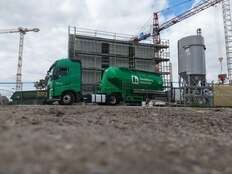- DREIHAUS project in Heidelberg uses evoZero\u00ae, the first carbon captured cement, for 3D-printed buildings.
- Heidelberg Materials aims to cut CO\u2082 emissions per tonne of cementitious material to below 400 kg by 2030.
- The project involves collaboration between PERI 3D Construction and Korte-Hoffmann Geb\u00e4udedruck.
- evoBuild\u00ae 3D printing material has a carbon footprint over 50% lower than conventional Portland cement.

Project Overview
The DREIHAUS project in Heidelberg is pioneering the use of 3D-printed residential construction with sustainable materials. It involves the construction of three buildings, utilizing advanced 3D printing technology and eco-friendly materials.
Innovative Materials
Heidelberg Materials is supplying evoBuild® and evoZero® for the project. evoBuild® is a fully recyclable material with a carbon footprint over 50% lower than conventional Portland cement. evoZero® is the world's first carbon captured cement, marking its debut in Germany with this project.
Collaborative Efforts
The project is a collaboration between PERI 3D Construction and Korte-Hoffmann Gebäudedruck. This partnership aims to optimize the design and construction process for 3D printing, enhancing efficiency and sustainability.
Sustainability Goals
Heidelberg Materials is committed to reducing CO₂ emissions, targeting a reduction to below 400 kg per tonne of cementitious material by 2030. The DREIHAUS project exemplifies this commitment, showcasing the potential for sustainable innovation in the construction industry.

